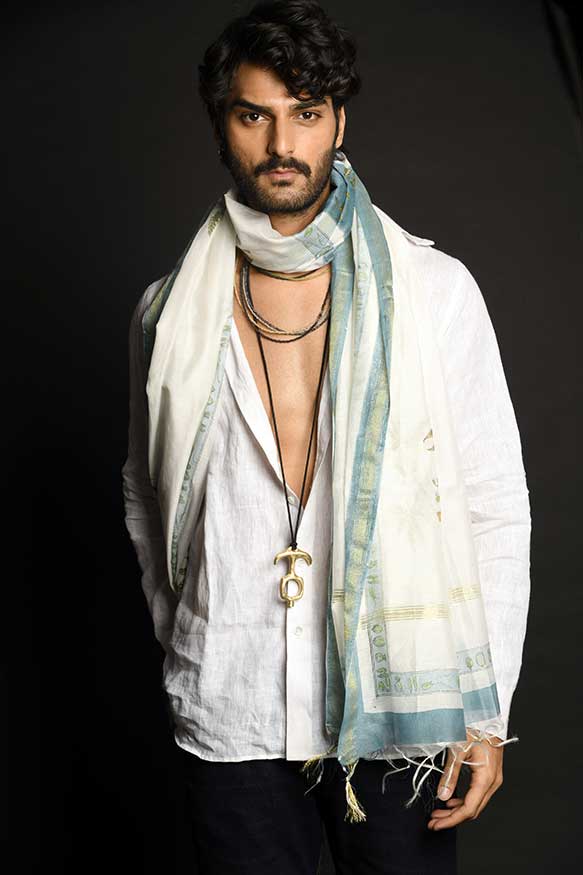SOCIAL DIARY: JOHN FITLER-ELLIS AND THE LAST OF THE DESIGN DINOSAURS
Dorothy Draper..
John Fitler-Ellis was one of nature's bachelors in the most charming, old school way He came with tons of funny stories, arch wit and a keyhole view into an exotic era and class several stations removed from my own. Every story conjured exotic Shangri-Las from a point of view that seemingly, had seen more events than amber. He was a time machine and I was transfixed.
The interior design business has changed from a clubby province of the 1% to an aspirational industry for the top 10%. We’re all living the new reality, but here are John and John-adjacent stories of how it was back then...when dinosaurs roamed among us.
John went to design school at Pratt and worked in Dorothy Draper’s decoration office. You have to remember that, at the time, design was ruled by social decorators. Draper was a Tuckerman. Her niece, Nancy, was Jacqueline Kennedy's great friend from Mrs. Porter's school, and later social secretary. Taste came from a privileged eye rather than a degree. Even really good designers like Frances Elkins got careers via social families, good marriages and doing-up their own pretty houses. Interior design only emerged as a trained profession with John's generation in the 40s-50s.
John spoke about Mrs. Draper, as he called her, with real affection. Specifically, John's job was to maintain the pink and green Greenbrier Hotel in West Virginia and the hallucinatory Fairmont in San Francisco. He explained the design strategy like this. Back then, it was unusual for families to eat anywhere other than at home. Consequently, when people went out for an evening, public spaces needed to be full of wow and pow. In Mrs. Draper's words, people needed design to make them feel like you had really BEEN somewhere.
CUSTOM UPHOLSTERY TOOK A YEAR
A point of comparison...when clients came to Mrs. Draper, they knew it would take at least a year to get a new suite of furniture. Add a few months if the textile had to be woven after the maquette was approved, (if you had to get the scale just so).
John told me the process was to design a room, then draft it and draw or paint it in detailed elevation. Then you drew furniture at scale for client approval and to troubleshoot the design in the space. Next, the design team built full size griege maquettes for approval.
Only after final client approval would the real furniture be built and upholstered at around the nine month mark. All told, it took about a year to get a custom sofa. Compare that to today's immediate gratification where we’re bummed if we can't get same day delivery.
HAPPY ROCKEFELLER WAS VERY, VERY, VERY PRACTICAL
Happy Rockefeller (via the Fitlers) was John's cousin. John pitched design services to Happy when he left Mrs. Draper to go out on his own as a decorator in 1964. He made a punch list of all the things that needed repair or replacement in the newlywedded Happy and Nelson's apartments.
They came to a pair of silk lampshades that had burned on hot bulbs, so John suggested a new textile cover. Happy squinted and simply turned the burned shades around with the scorched side to the back. Discussion over.
A GOOD FACELIFT IS LIKE A GOOD HAIRCUT
John’s mother was a waspy, social register Rittenhouse from Philadelphia, back when all that mattered. A lot. The family money ran through Mississippi to Pennsylvania, from copper and wire rope.
He jumped cities and apartments often to avoid boredom and, I think, loneliness. John passed time reading, practicing Italian on a vintage phonograph, holding grudges and planning the next surgical intervention. As he put it, a good facelift is like a good haircut. It should never look like you just had one and never look like you need one.
Bless him. He never complained and never explained. He did exactly as he pleased most of the time. A year in Rome? He left with a sketchbook and the social register. Project manage a big Central Park hotel redo? See you week from Tuesday. Oh, and could the building management please speak to Mary McFadden about the too enthusiastic sex noises coming from her apartment?
Age rarely deterred him from confidence that he was still in the game. Two vodka tonics and he sincerely believed that having any man in the room was just a pursed moue away.
REALLY RICH PEOPLE RENT
John calibrated his life. He was ready to change everything when the spirit moved and claimed to know exactly when the trust money would run out. Besides, in his words, REALLY rich people just rent.
John hung a photo of Mummy somewhere in every one of his apartments. The photo was a candid taken by someone social, like Cecil Beaton, and printed at 16 x 20 or possibly larger. It shows Mummy in what looked to be the dizzy midst of Stendhal’s syndrome. You know, released by rapture? The photo depicts a jeweled, swan-like woman mid fall into the most beautiful, full-collapse swoon I had ever seen. Whenever someone asked about the photo, John waited two beats and took great pleasure sharing that in the picture, Mummy was actually just dead drunk.
MUMMY AND STYLE
Seems Mummy knew a thing or two about getting attention. In the 30s she commissioned a custom convertible Morris Miner Tourer in light blue. She had her liveried driver kitted out in a matching blue uniform. When Mummy and a friend summered in Cannes, they dyed pet standard poodles to match their bathing suits: one in blue, the other in yellow. All the better to march those poodles up and down the Croix des Gardes every afternoon.
Mummy loved clothes, daily facials and massage and snubbing lesser socials. A favorite insult was dismissing Grace Kelly's cross-town family as "lace curtain Irish". When Mummy cleaned out the closets, she sent clothes to charity shops out of town because the idea of seeing her Irish maids in last season’s Charles James or Manbocher gowns was more than she could bear. So, she drove them to Baltimore.
“WELL...YOU KNOW...PEGGY NEVER DID HAVE ANY MONEY”, PUNCHING THE AIR WITH HER LIT CIGARETTE ON “DID”.
Joan Guggenheim-Van de Maal
MUMMY’S LIBERTINE SOCIAL SET
Seems Mummy’s crew was a libertine bunch. John describes meeting Wallis Simpson and thinking she was “A little boy in pretty dresses”. He was happy to trot out the whispers about Mrs. Simpson having been schooled in the art of pleasure by Chinese professionals during her childhood in Asia. Seems one of Mummy's favorite stories was the time she walked in on the future Duchess of Windsor at yet, another party. Mrs. Simpson was on her knees in front of a man, using the same talents that eventually compelled King Edward VIII to abdicate for the woman he loved. The story is Wallis looked around the man and locked eyes with Mummy at the door, then casually went back to the job at hand.
John claimed that the social mores of that group had their own version of the Victorian language of flowers. Anyone who spent more than 15 minutes chatting with you was understood as a coded conveyance of romantic intention, regardless of gender.
A San Francisco walker named Dr. Fred Hudson confirmed as much when he told me that he hated gay liberation because that was when straight guys stopped putting out. To hear dinosaurs tell it, back in the day there was hardly a man alive who would pass up no-consequences sex.
MUMMY AND MOTHERHOOD
John's privilege came at a cost. He remembers being six or seven and crying. John didn’t remember why, but wondered why this woman, his mother, would not comfort him. Instead, Mummy sat him down, looked him in the eye and said, “John, some women weren’t really meant to be mothers”.
JOHN AND JOAN GUGGENHEIM VAN DE MAAL
Years later John introduced me to Joan Van de Maele, who was Peggy Guggenheim’s cousin. John and Joan had worked together at Dorothy Draper’s office. At the time, Joan was over 70 and on her way to Alaska fly fishing for the first time. She stopped into San Francisco for a visit and met us for Vietnamese food.
I was expecting a woman who looked 70. Instead, Joan wore a short, leather skirt and high heels. She could pass, easily, for ten or more years younger. I was afraid that she wouldn’t like Vietnamese spice because, you know, old people. When the meal came, Joan got a hot pepper and let out a whoop. She doused the fire with a double whiskey and wolfed another red pepper.
As the meal closed with sweet coffee, I mentioned that I had lived in Venice, Italy next door to Peggy Guggenheim's house. With interest and frankly, a little awe, I asked Joan what Peggy was like. Joan took a big, dramatic cigarette draft. She leaned in conspiratorially and said, “Well….you know…Peggy never did have any money”, punching the air with her lit cigarette on “did”.
Gob smacked, I swallowed any follow-up questions and waited until later to ask John what Joan meant. The New York Times writes that Peggy inherited her fortune at 21 in 1919 after her father, Benjamin sunk with the Titanic in 1912. Seems the 2.5 million dollars Benjamin left Peggy in 1912 (approximately $35 million in today’s dollars) was nothing compared to the $150 million Joan was to get.
They're all gone now. But, if you look, sometimes you still see dinosaur footprints.






